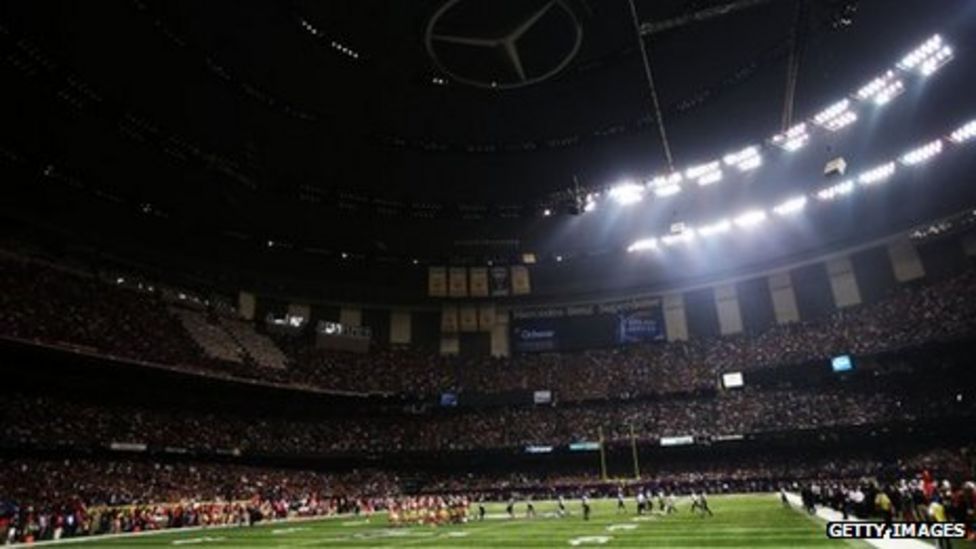You know something has truly gone wrong when people remember an event not by it’s official title, but by the technical hiccup that sent it off course. A little under a decade ago, Super Bowl XLVII took place at the Caesars Superdome in New Orleans. And as the San Francisco 49ers got the game underway, no-one watching could have guessed that it would eventually come to be known by a different name: the “Blackout Bowl”.
At around the 13 minute mark in the third quarter of the game, a power outage at the Superdome threw the biggest match of the American Football season into darkness. With players on both teams looking inquiringly to the sidelines, and coaching staff scrambling to find out what was going on, the game was suspended – leading to an unprecedented 34 minute long break in play.
The Super Bowl isn’t the only sporting event to have fallen victim to a blackout in recent times. Tottenham’s 2014 Europa League game against Besiktas was stopped after just eight minutes when the floodlights failed. Last year, England’s World Cup qualifier in San Marino was nearly abandoned as the result of another power outage. And just last month, Watford and Norwich’s Premier League clash was suspended for more than 10 minutes due to floodlighting issues.

SuperBowl "Blackout Bowl" 2013. Image Credit: Getty Images
The interruption of a game or sports event due to lighting failure has a number of ramifications. First, there’s the issue of reputational damage. In today’s hyperconnected world, it takes seconds for bad news to spread, and a seemingly infinite amount of time for it to fade away.
While many were quick to praise the likes of Oreos for spinning the Super Bowl blackout into cute social media content for instance, others were less appreciative of the limelight. Doug Thornton – an executive at Superdome management company SMG (now ASM) – told Sports Illustrated that “even though it wasn’t our fault, it became our problem… the whole thing bothered me for months .” For years, perhaps decades to come, casual fans will likely remember the Superdome as the home of the Blackout Bowl.
Then, of course, there’s the financial impact of a lighting outage. Some estimates suggest that the 34 minute delay in 2013 cost around $2-3m in terms of lost revenues, though that’s both unverified, and quite obviously at the extreme end of the scale. Generally, it’s difficult to put an exact number on a lighting-related delay due to the huge number of factors involved.
Nonetheless, sports venues do need to think about the potential costs of a lighting failure – which can range from fan compensation through to the deterioration of commercial relationships.
In 2016, for instance, a group of Bournemouth fans demanded reimbursement from Manchester United after their game was cancelled due to an erroneous security threat. One year before, Brentford F.C. actually acceded to a similar request, compensating Birmingham City supporters for their travel after a match between the two was called off at short notice. Fan tolerance for being sent away with the promise of free readmission for a replay seems to be at an all-time low.
It’s easy to understand why. Delays to the completion of a sporting event can be hugely disruptive in terms of travel, particularly for fixtures that take place during the middle of the week or late on a weekend. Replays might be arranged for a time that’s no longer convenient for them. And any unscheduled interruption, no matter how slight, can fundamentally divert the flow of what might otherwise have been a scintillating competition.
And then, there are the athletes to consider. The introduction of the Video Assistant Referee (VAR) into football has reignited the debate about the impact of interruptions in play. After Liverpool’s midwinter game against Midtjylland was delayed by 10 minutes due to VAR checks in 2020, manager Jürgen Klopp bemoaned the fact that “each review was really long and it was really cold for the boys .”
No amount of training can prepare a player for 10 minutes of inactivity in freezing conditions, of course. And even in normal circumstances, interruptions can dramatically affect player performance – a 2018 study of games in Germany’s Bundesliga found that more than half of the decline in player performance over the course of a match can be attributed to interruptions rather than physical exhaustion .
While it might not be possible to put a specific financial cost on interruptions, all of the evidence suggests that there are very real consequences when play gets delayed or abandoned. And though lighting might be only one of the factors that can play a role in disruption, it’s also one that sports venues have a great deal of control over.
Ensuring that those lights stay on, and that it’s what happens on the pitch that makes the headlines, is in everyone’s best interests.
